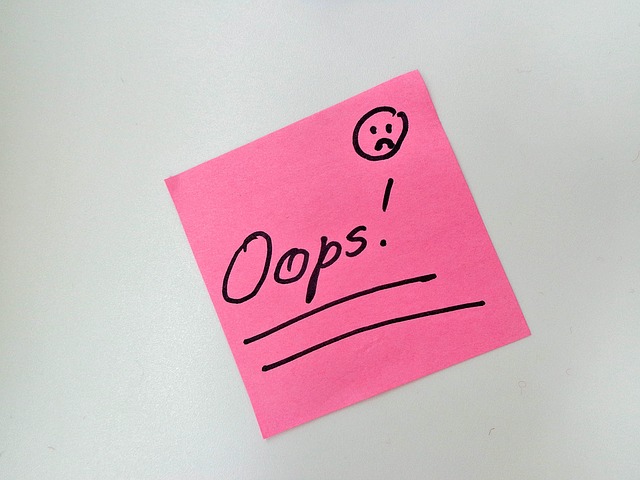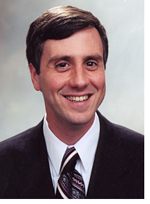
On Sept. 17, 2019, virologist David Sanders — who recently won a lawsuit brought against him for efforts as a scientific sleuth — wrote a letter to the Journal of Cellular Physiology about a 2004 paper whose images raised his eyebrows.
The response a day later from an editorial assistant was a hint of what was to come:
I would like to let you know that the manuscript has been already published and the changes which you have highlighted cannot be changed.
Well, yes.
Eventually, Sanders ended up in an email exchange with Gregg Fields, the editor in chief of the journal, who wrote on January 29:
I have looked at the manuscript in question, blown up under high resolution, and compared the control lanes (actin in Figure 1A and 1C, 28S in Figure 1B, and actin in Figure 2A) that you mentioned. It does look like the control images were reused. I will be contacting the author.
Fields followed up on February 3:
Attempts to contact the corresponding author of this manuscript, Dr. [Sylvie] Ménard, have been unsuccessful. The corresponding author email address is no longer active, and there are no publications from Dr. Ménard after 2015 listed in PubMed. I think that the best option is for you to submit a letter of concern to the Journal of Cellular Physiology.
Sanders did so, and the letter, including a description of the “serious issues” in the paper, was published earlier this month:
The claims are undermined by apparent multiple image duplications.
The paper, however, was not flagged with an expression of concern, nor was it retracted. It has been cited 27 times, according to Clarivate Analytics’ Web of Science.
‘[A]n honest mistake was made’
We were curious about how the journal had handled the allegations. If they were worth publishing, why wasn’t the paper flagged in some way? Fields forwarded our request for comment to Wiley, which publishes the JCP. That’s when things got interesting. Here’s a statement the publisher sent us:
A letter to the editor of the Journal of Cellular Physiology raises a concern of image duplications in a 2004 article by E Galmozzi et al. When there’s a question of research integrity, the standard process is for the journal’s editorial staff to determine if the complaint is valid. Should the editors believe there is a possible issue with the reliability of published research, they would alert the publisher to launch a formal investigation following the Committee on Publication Ethics (COPE) guidance. In this case, an honest mistake was made in which the letter was accepted and published as a piece of research content in the journal. Wiley is now investigating the concern about image duplication and we will get back to you once a decision about the integrity of the 2004 article is made.
The reference to “an honest mistake” of course made us even more curious. On February 3, Fields had written to Sanders:
I think that the best option is for you to submit a letter of concern to the Journal of Cellular Physiology.
On the 4th, he explained how to submit the letter. That seemed inconsistent with the idea that the letter had been published in error. We asked Wiley to explain:
Dr. Fields, the editor in chief of the Journal of Cellular Physiology, did advise Dr. Sanders to submit his concern to the journal as a “Letter to the Editor.” This is the mistake that we’ve indicated occurred, and which ultimately led to publication of the letter detailing the concern with images in the E Galmozzi (2004) article without linking to it. Letters to the Editor do not link to the research to which they relate as would an Expression of Concern.
Any concerns about research integrity should be addressed by the editor and the journal publisher in a formal investigation following the Committee on Publication Ethics (COPE) guidance. In this case, an effort by a new editor to be completely transparent resulted in an honest mistake in processing a research integrity concern. We take responsibility for training editorial staff on best practices for handling concerns about ethics or integrity of research, and will use this opportunity to ensure our staff are educating editors on Wiley’s policy for retractions, withdrawals and expressions of concern.
We asked Enrico Galmozzi, the first author of the paper, for his response to the letter:
I regret any allegations from Dr Sander[s] to which I will reply as soon as possible. I consider the accusations unfounded as there has been no duplication or alteration of the images indicated by Dr Sander[s]. However, I find it rather childish to contest a work by not criticizing it on the merits but invalidating it for alleged duplications of images absolutely pretentious and hardly demonstrable. It is my opinion that Dr Sander[s] could better use his time and acumen. It will be my concern to respond quickly to your concerns and accusations.
Well, then.
‘[A]ddressing seriously the issues’
Given all that, we asked Sanders how he feels about how the journal handled your correspondence:

The response to my concerns was swift and effective. The Editor-in-Chief confirmed that the duplications that I had identified appeared to be significant. He reported reaching out to the authors, but did not receive a response. He then recommended that I submit a Letter to the Editor. I did so, and it was published.
It does seem that, in the interest of the potential readership of the original article that there should be a link from the 2004 Galmozzi et al article to the letter and that the PubMed entry for the original article possess a link to my letter. The Editor-in-Chief is addressing seriously the issues regarding scientific integrity at the Journal of Cellular Physiology, which include problems with many other articles besides Galmozzi et al.
I hope that this episode does not slow down further investigations. There is no need for them to take months or years. Interestingly, another article published in the Journal of Cellular Physiology by a subset of the authors of Galmozzi et al has extensive textual overlap with uncited articles by other authors as well as duplicative publication with articles published by some of the Galmozzi et al authors.
How does Sanders think this compares to how other journals have handled such cases?
The journal took fair, constructive, and rapid action. I have no problem with being identified as the revealer of the image duplication, although I can understand that others might wish to remain anonymous. I believe that transparency in these matters is consistent with the scientific enterprise. Other journals take years, consult institutions that have an inherent conflict of interest and can be motivated to hide violations of scientific integrity by their employees, and frequently conclude the matter by doing nothing.
In contrast, some journals, such as the Journal of Biological Chemistry, have taken a more proactive approach. My own experience with JBC is that it has changed from a publication that was completely resistant to doing the right thing to one which is willing to take proper corrective action. PLOS ONE has also partially transitioned to appropriate intervention. On the other hand, Cell journals are at the other end of the spectrum in responsiveness.
Update, 2200 UTC, 4/25/21: The journal has subjected the paper to an expression of concern.
Like Retraction Watch? You can make a tax-deductible contribution to support our work, follow us on Twitter, like us on Facebook, add us to your RSS reader, or subscribe to our daily digest. If you find a retraction that’s not in our database, you can let us know here. For comments or feedback, email us at [email protected].
Does the eminent Dr. Sanders intend to prosecute all the collaborators of Prof. Croce or should we think that the presence of Dr. Iorio in the aforementioned paper is only a mere coincidence?
https://pubmed.ncbi.nlm.nih.gov/16103053/?from_term=Iorio+mv&from_pos=10
Who calls the shots? The EIC or the publisher? For this journal, it appears clear the the publisher is the owner and the EIC serves at their pleasure.
This journal has something not found on most “about this journal” pages, a statement regarding articles published with questionable figures. “Thanks to the work of observant and committed readers, we were made aware of published articles that have questionable figures in them. We are investigating those papers along with others …. We are building a new editorial team of Executive Editors, headed by Prof. Gregg Fields as Editor-in-Chief since January 1, 2020.” So sounds like there’s both a backstory and perhaps more news will be forthcoming.